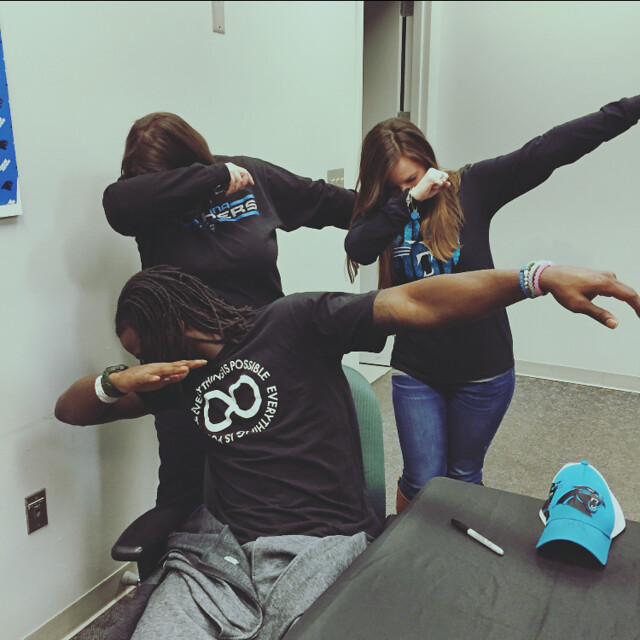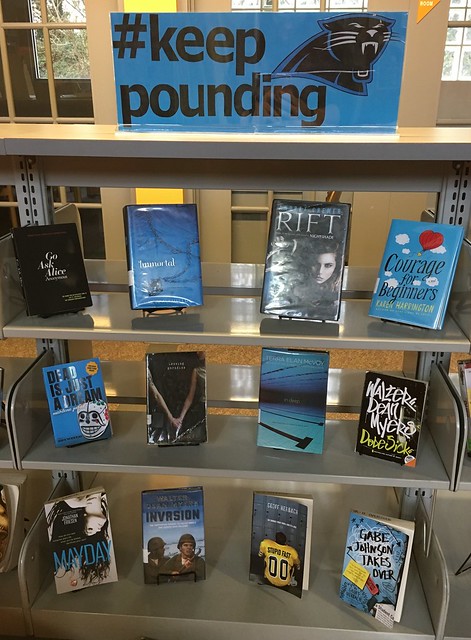Wednesday, February 10, 2016
#colourourcollections - an enjoyable way of interacting with collections
I enjoyed seeing this through various social media streams, hence this Storify. I liked the way it helped people look at and think about collections. It also showed a different kind of value of digitisation. I liked the collaborative approach to. I did notice a few different hashtags, but it all seemed to work.
Tuesday, February 9, 2016
Library staff as part of the story for local studies
 |
| photograph thanks to Charlotte Mecklenburg Library |
 |
| photograph thanks to Charlotte Mecklenburg Library |
 |
| photograph thanks to Charlotte Mecklenburg Library |
Toronto and Kansas City Libraries took a different approach (see this news article for more information) to show their support for local teams.
see
and’Tis but a flesh wound! Next game... #TaketheCrown #GoRoyals #bookspinepoetry @torontolibrary @bluejays pic.twitter.com/wg3yqoxApM— KCMO Public Library (@KCLibrary) October 21, 2015
These examples all all show the importance of sport in local studies collections as well as libraries participating in key local events. Great work by these three libraries in connecting to their communities in creative ways.Well played @KCLibrary but we've got a way with words too. 'Til tomorrow! @BlueJays #ComeTOgether #GoJaysGo pic.twitter.com/qED5PFp95t— TorontoPublicLibrary (@torontolibrary) October 21, 2015
Thursday, February 4, 2016
Golden Valley Library building project
 I really like the way that Hennepin County Library shares their stories on Flickr. This set shows a library renovation.
I really like the way that Hennepin County Library shares their stories on Flickr. This set shows a library renovation. It is nice to see the changes, but also sharing the photographs through the project helps to explain why the library is closed.
Wednesday, February 3, 2016
Wildlife webcams and local studies
I was looking at this blog, thanks to a referral from Make wealth history. The Wildlife gadgetman, made me think about various webcams and their place in local studies. This particularly relates to webscams in public places, recording what is happening in the environment. Over time this will track environmental changes, and well as different patterns of use. It will help record the environment. This could be an area to think about capturing for local studies. Maybe it is not possible to catch all of the recordings (and they would need good indexing to be useful), but it would help people studying the area in the future, if they could see some of what the webcams are showing.
You could be tracking eagles in the area (this one can show feeding of young if you look at it at the right time of day), or look at urban environments.
You could be tracking eagles in the area (this one can show feeding of young if you look at it at the right time of day), or look at urban environments.
Monday, February 1, 2016
The cat that ate the candle and the ewe with the crooked horn from Europeana sounds - music in libraries
The cat that ate the candle and the ewe with the crooked horn post appeared on the Europeana blog, from Europeana sounds. Go away and look/listen to this blog post before reading on. You might like to explore Discover Rap music in Portugal with the project RAPortugal 1986–1999 as well.
Europeana sounds, at a national/international level, is doing what public libraries need to do locally - make people more aware of music and local audio, as well as collect and preserve it. I have written about this before.
Europeana sounds highlights the need for local collecting of music. Think about it in your library as a way of recording information about the community for local studies. What music is being played now? Capital City Records from Edmonton Public Library is an excellent example of local music collecting for a public library, for local studies and for current use.
Europeana sounds, at a national/international level, is doing what public libraries need to do locally - make people more aware of music and local audio, as well as collect and preserve it. I have written about this before.
Europeana sounds highlights the need for local collecting of music. Think about it in your library as a way of recording information about the community for local studies. What music is being played now? Capital City Records from Edmonton Public Library is an excellent example of local music collecting for a public library, for local studies and for current use.
Subscribe to:
Comments (Atom)